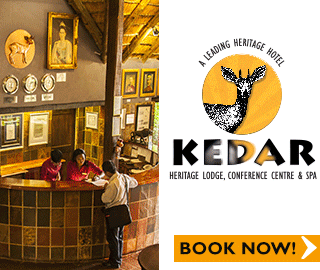
The Underground Hub Of Arts.
WORDS & PHOTOGRAPHS: ALESSANDRO PARODI | 19TH MAY, 2015 05:31
The creation of an art workshop in the neighbourhood of Noord Street in Twist Street, Johannesburg, South Africa, has seen a dramatic improvement to the lives of the people who inhabit it. Hosting a large bustling taxi rank, the area is one of the busiest and more feared parts of the city centre. Since local artist Msa Xokelelo and his colleagues settled in Noord, a cultural pole of attraction has risen.
The central street lanes of Johannesburg constitute a maze where thousands of minibus taxis – known locally as kumbis – rush, filled to the brim, from residential neighbourhoods to the Business Districts and back again. Amidst the convulse pulse of Noord Street, where one of the most active taxi ranks of South Africa is abuzz day and night, informal vendors sell grilled corn, clothes, pornography Dvds and church items. To reach one’s destination, it is required to dodge street stands, mobile telephone booths, and mobs queuing to catch transport and hundreds of pedestrians. Noord Street is what is closest, in Africa, to the Greek concept of agorà, a common place where social life unravels.
Parallel to the main road stands a rusty gate, at the corner of Twist and De Villiers Street, enclosing a quiet oasis where arts and culture are harboured and pursued with dedication and passion. Msa Xokelelo operates from here, a South African iconic artist that has made the urban scent of Johannesburg his trademark, encapsulated in his paintings and drawings. His visceral production portrays modern society, African tradition and the local history of violence with crude symbolism and rough materials. He was one of the first artists to settle in the Noord Street area.
“We came five years ago”, explains Xokelelo, “and the place was abandoned and occupied by squatters. Drugs were sold and crime was a daily concern”. The creation of a creative hub was instrumental in the combating of illegal activities in the area and made space for interactions between people and the growth of artistic culture. “Soon”, Xokelelo continues, “we were recognized and supported by the municipality, which fosters us and welcomes the positive effects of our presence here”.


Finding their inspiration in the lively vibe of the city centre, Msa Xokelelo and the other artists of Noord produce distinctive artwork. Their visuals are in stark contrast to the works showcased in Johannesburg’s rich upper-class galleries. They do not create to entertain or amuse. Their art speaks of the crushed dreams of miners and prostitutes. They seek to reproach the failure of politics and the invasive advertisements of the commercialised sangoma – witchdoctors, prophets and traditional ealers. It describes everyday life in town and gently laments the decay of traditional values in favour of westernisation.
Over the years the building that houses them has been refurbished and now incorporates an art studio, a music workshop, a hair salon, a library, a small primary school and community projects such as subsistence farming and sports. The local underground culture, which was alive even before the creation of the studios, became an integral part of the growth and is a source of education for the youth of downtown Johannesburg. A regular sighting is the practice of skate boarding and basketball by the local children. “Msa and Simon Ngubane [the owner of Iphimbo Music] are for us a father and a grandfather”, says one of the children. “They set an example for us and always help us through difficulties, without judging us”.
The creation of a lively and young community has also reduced the incidences of drug abuse. The neighbourhood was previously known for the concentrated presence of nyaope addicts. The substance is an opium based concoction sometimes mixed with rat poison that causes disastrous behavioural and psychological effects on its users. A strong correlation exists between the consumption of nyaope and the increase in the rate of the spread of the HIV virus, making it a plague in the poorest neighbourhoods of South Africa. Presently, the addicts are fewer and so are the drug dealers, who find fertile land for their business where no sense of community exists.
Due to the success of the art hub, the art complex in Twist Street now appears as a monument to social ransom and urban requalification. The building’s architecture and the square on which it lays are in themselves a portrayal of South Africa’s history. The structure was previously a military barracks during World War I, World War II and under the apartheid regime, which lasted from 1948 until 1994. A manhole in the building leads to the entrance of a complex network of underground tunnels that run from Constitutional Hill to Newtown covering the whole extension of the Central District. The system was built in 1935 and was mainly used to deliver mail to the post offices of Harrison Street, Park Station and Jeppe Street in Johannesburg.
The incredible cultural fervour of this small urban island is remarkable because of the spontaneous action of private citizens, and has become the key ingredient for the success of urban upliftment.
What is in progress here is a phenomenon known to sociology as ‘gentrification’. The arrival of an educated and young middle class has rapidly inverted the history of abandonment that characterized old colonial areas, transforming them from decaying to decadent. Other examples of a similar process in Johannesburg are the precincts of Newtown, Braamfontein and the new expanding Maboneng district, located in Jeppestown around the trendy square of Arts on Main.
The revival of inner urban centres such as Noord Street and other areas are positive developments which contribute to the economic growth and development within big metropolitan cities such as Johannesburg that attracts hundreds of new arrivals of hopeful migrants every day.
Sauer Street , Johannesburg, South Africa. Parallel to the main road stands a rusty gate enclosing a quiet oasis where arts and culture are harboured and pursued with dedication and passion. Photo: Alessandro Parodi
Simon Ngubane, owner of Iphimbo music. His son, Msa Xokelelo operates from the Noord Street. Msa is a South African iconic artist that has made the urban scent of Johannesburg his trademark, encapsulated in his paintings and drawings.
Noord Street is what is closest, in Africa, to the Greek concept of agorà, a common place where social life unravels.














